Description
Data Sheet
-Full port, 1/4″-4″(DN6-DN100)
-W.P.:1000WOG(PN63)
-W.P.:-20℃-180℃
-Investment casting
-Blow-out proof stem
-Locking device handle (option)
-Thread type: ASME B1.20. 1 (NPT),
NIN 259/DIN 2999, BS 21,
ISO 288-1, ISO 7-1
Socket weld type: ASME B16.11 & DIN3239 part2
Here are the main features and working principles of a three-piece ball valve:
- Structure: A three-piece ball valve is composed of three valve bodies, typically two end bodies and one middle body. Each body contains a ball and a sealing system. This structure provides greater stability during operation, reducing torque and friction on the ball.
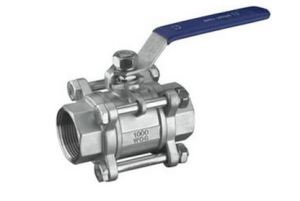
- Intermediate Shut-Off: A three-piece ball valve has an intermediate shut-off function, meaning that when the valve is in the closed position, a sealed intermediate passage is formed between the middle body and the two end bodies, blocking the flow of the medium. This intermediate shut-off design enhances the sealing performance of the ball valve, reducing the risk of leakage.
- Independent Operation: Each valve body has its own operating lever or actuator, allowing for individual control of the opening and closing of each body. This makes the three-piece ball valve particularly useful in applications that require precise flow control or multiple positioning operations.
- High Flow Capacity: Due to its multi-body structure, a three-piece ball valve typically has a larger flow passage diameter, enabling it to handle high-flow media and meet the requirements of high-flow applications.
Three-piece ball valves find wide applications in industries such as petrochemicals, chemical engineering, natural gas transmission, power generation, and more. They offer reliable sealing performance, high flow capacity, and flexible operation control, catering to various complex engineering needs.
The valve body is made of precision cast stainless steel materials such as 304, 316, 316L, 2205, and others.
- Preparation: The appropriate stainless steel materials are mixed in the correct proportions and subjected to high-temperature melting to obtain a liquid stainless steel alloy.
- Casting: The molten stainless steel is injected into prepared molds, filling the mold cavities and ensuring even distribution of the material.
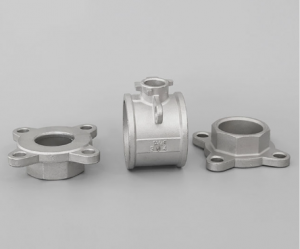 Cooling and Solidification: The injected stainless steel cools and gradually solidifies, allowing the part to maintain its precise shape during the casting process.
Cooling and Solidification: The injected stainless steel cools and gradually solidifies, allowing the part to maintain its precise shape during the casting process.- Removal of Castings: Once the stainless steel has completely solidified, the castings are removed from the molds. Some deburring or surface treatments may be required.
- Post-processing: Additional post-processing steps such as heat treatment, machining, polishing, etc., may be carried out as needed to achieve the final precision stainless steel components.
Precision casting of stainless steel enables the production of various complex stainless steel components such as pipe fittings, valves, pump bodies, automotive parts, and more. It finds wide applications in industries such as aerospace, medical equipment, petrochemicals, food processing, and others. This process offers high precision, strength, and excellent corrosion resistance for stainless steel components.
Threaded connections and welding are two common methods of pipe connection, each with its own advantages and suitability for different applications.
-
Threaded Connections: Threaded connections involve joining pipes by matching their threads. They have the following characteristics:
- Easy installation: Threaded connections require no special tools or welding equipment and can be installed using a wrench or other tools.
- Convenient disassembly: Threaded connections can be easily disassembled and reassembled, facilitating pipe maintenance and component replacement.
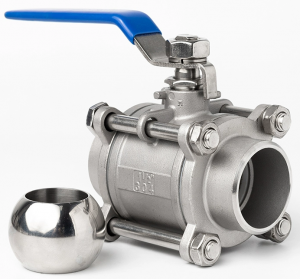
- Suitable for smaller diameters: Threaded connections are suitable for smaller diameter pipes and are typically used in pipes below DN50 (2 inches).
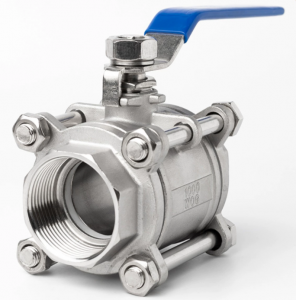
-
Welding Connections: Welding connections involve heating and melting the pipe material to form a continuous connection. They have the following characteristics:
- High strength: Welding connections provide a durable and strong connection with high strength and sealing performance.
- Suitable for larger diameters: Welding connections are suitable for larger diameter pipes and are typically used in pipes above DN50 (2 inches).
- Good seismic resistance: Welding connections have good resistance to seismic forces and can withstand external forces and vibrations.
The choice between threaded connections and welding depends on factors such as pipe diameter, application requirements, and environmental conditions. It is important to consider the specific needs of the project and consult applicable codes and standards when deciding on the appropriate pipe connection method.
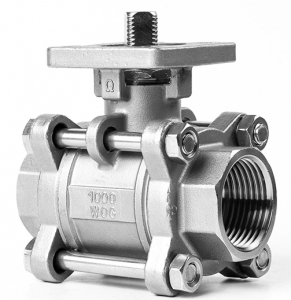
Here are the main features and working principles of a platform three-piece ball valve:
The platform ball valve is designed according to the ISO 5211 standard, which provides a high platform connection plate for convenient installation of the valve actuator. It allows direct mounting of the actuator without the need for additional brackets and connection shafts, unlike regular ball valves that require a separate support bracket and connection shaft between the valve and actuator.
Pneumatic platform ball valves have the advantages of low flow resistance and high flow capacity. They can be used for both on/off shut-off and flow control applications. By selecting different materials for the valve body and seat, they can be applied in various operating conditions. However, due to the shorter distance between the platform ball valve and the pneumatic actuator, it is not suitable for applications with high media temperatures to prevent damage to the actuator caused by excessive heat.

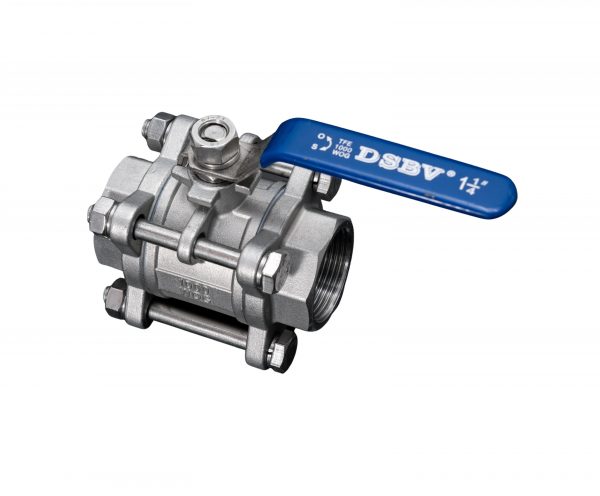
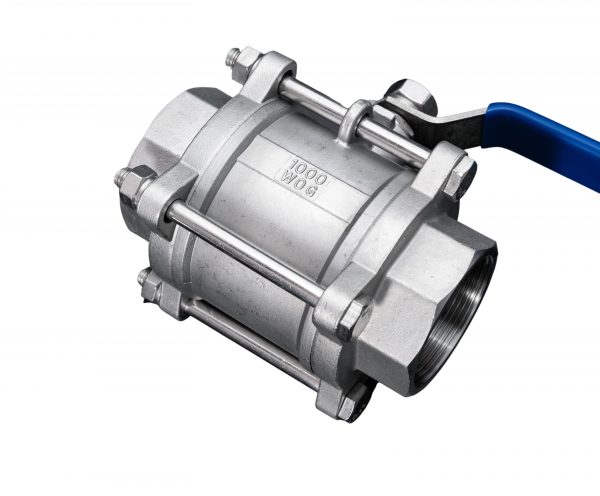
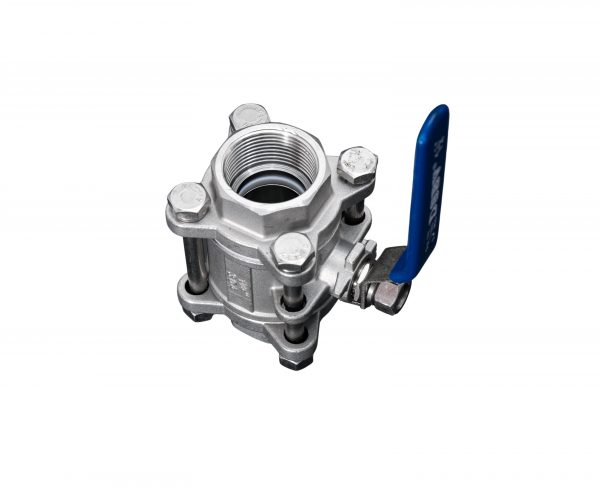
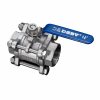
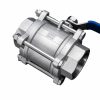
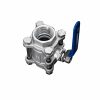
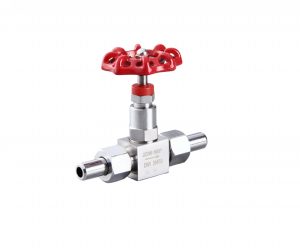
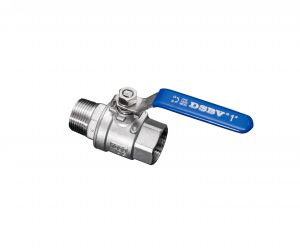
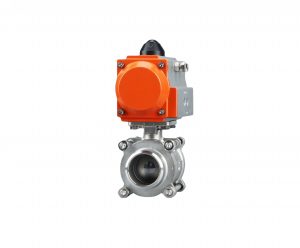
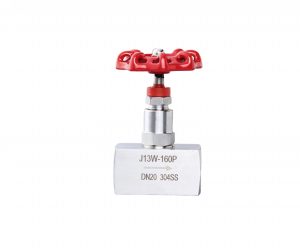
Reviews
There are no reviews yet.